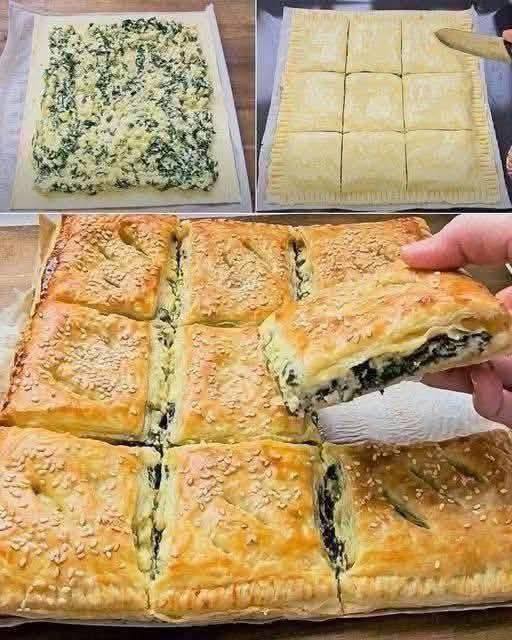Puff pastry is a light, flaky, buttery dough that rises in layers when baked. It’s used in both sweet and savory dishes, from tarts and turnovers to vol-au-vents and pies. Here’s a detailed overview:
🥐 Puff Pastry Basics
Key Characteristics:
- Multiple thin layers of dough and butter
- Rises dramatically in the oven due to steam
- Can be used for sweet or savory preparations
Types:
- Store-bought (ready-to-bake): Convenient, works well for most recipes.
- Homemade (from scratch): Requires folding butter into dough repeatedly (lamination), giving maximum flakiness.
🥄 Using Puff Pastry
Preparation Tips
- Keep it cold: Butter must remain cold to achieve flakiness.
- Thaw properly: If frozen, thaw in the fridge for a few hours before using.
- Prevent sticking: Lightly flour the work surface and rolling pin.
- Docking: For tarts and pies, prick holes with a fork to prevent excessive puffing.
Baking Guidelines
- Temperature: Usually 375–400°F (190–200°C).
- Time: 15–25 minutes, until golden brown and puffed.
- Optional: Brush with egg wash (1 egg + 1 tbsp water) for shine and color.
🍴 Popular Uses
Savory:
- Sausage rolls
- Chicken pot pie topping
- Cheese straws
- Vol-au-vents filled with seafood or mushrooms
Sweet:
- Fruit turnovers (apple, cherry, berry)
- Napoleons / mille-feuille
- Palmiers
- Tarts with custard or chocolate
🏠 Homemade Puff Pastry Overview (simplified)
- Make a dough base (detrempe).
- Encase cold butter in the dough.
- Roll and fold multiple times (lamination), chilling between folds.
- Cut and bake as needed.
If you want, I can give a step-by-step recipe for making puff pastry from scratch or a quick shortcut version using store-bought pastry for fast sweet or savory treats. Which one would you like?
